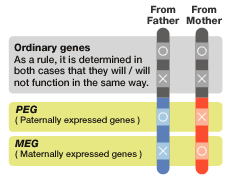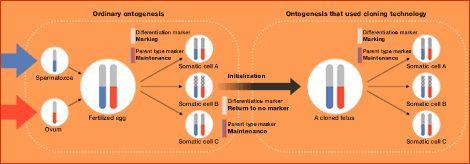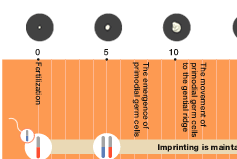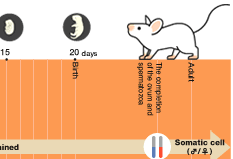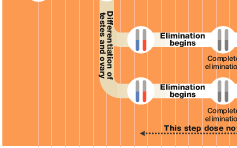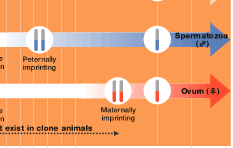Let's start from the conclusion. Genome imprinting is maintained over the entire life of the somatic cell. The germ cells, which are the link to the next generation, are all eliminated during the fetal period, however, and will be imprinted again. The DNA of the generative cells in a mouse fetus is too small to be analyzed. Therefore, a clone is created and that body is investigated. This enables the fate of imprinted genes in germ cells to be traced. In males, the genome imprinting is preserved for 7.5 days during the fetal period. It gradually disappears over 10.5 to 13.5 days. After 15.5 days, the paternally imprinting occurs. Also, as the research of Prof. Kawano of the Tokyo University of Agriculture showed, the imprinting in females is identical to that of males until it disappears. The maternally reimprinting is completed during a period of several days to three weeks after birth, however.
Experiments were conducted with mice, but this likely occurs with all mammals, including human beings. The individual cell spends its entire life within the imprinting during the fetal period, and is imprinted anew when the link is made to the next generation. It is very interesting to consider all the implications of this. |
